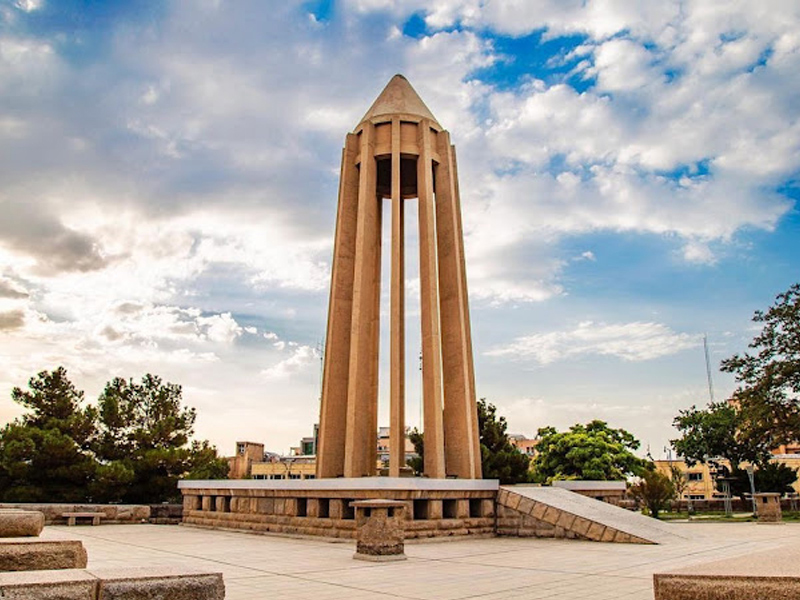The Avicenna mausoleum is located in Hamadan, Iran. Avicenna is the most famous Iranian physician in the world. The mausoleum is considered one of the remarkable attractions of Hamadan, shining like a bright star over the city. Avicenna, also known as Ibn Sina, was one of the greatest Iranian scholars. Although he was born in the village of Afshana in Bukhara, which is now part of present-day Uzbekistan, his main place of residence and birth is associated with Bukhara, the capital of the Sassanian Empire. Avicenna experienced a life full of ups and downs and possessed remarkable skills in various fields such as medicine. In this article from Eligasht, we will take a short tour of this famous scientist’s mausoleum.
Avicenna mausoleum is a magnificent and worthy structure built in honor of this great scholar. He is known as a prominent philosopher who had profound insights into ethics. Avicenna was also recognized as a physicist, mathematician, geographer, astronomer, geologist, chemist, and renowned poet and vocalist.
Book Iran Air flights from London to Tehran and Tehran to London with Eligasht UK:
Throughout his long and eventful life, Avicenna treated numerous kings and served as their physician. Due to this, he was bestowed with various titles during his medical career. For example, titles like Sharaf al-Mulk, Prince of Subjects, Sheikh al-Rais, and Hujjat al-Haq were conferred upon him by kings. Sheikh al-Rais passed away in Hamadan due to an illness, and his body rests there for us Iranians. Currently, his mausoleum is one of the most visited attractions in Hamadan.
Access to the Avicenna mausoleum
To visit and observe the Tomb of Avicenna up close, you need to travel to the city of Hamadan and make your way to Avicenna Square. It’s worth noting that the working hours of the tomb vary depending on the seasons. During spring and summer, it is open from 9 am to 8 pm, while in the second half of the year, during autumn and winter, it is open from 9 am to 5 pm.
A Brief History of the Tomb of Sheikh al-Rais
According to the remaining historical records from the time of Avicenna’s life, he served as the personal physician of the Sassanian government and, after their downfall and the ascent of Sultan Mahmud Ghaznavi to power, he began his migration from the city of Bukhara. During his journey, he resided in various cities, one of which was Isfahan. During his travels and a trip from Isfahan to Hamadan, Sheikh al-Rais fell seriously ill and took residence in the house of a relative and friend named Abu Sa’id Dakhdook in Hamadan.
However, after some time, his illness worsened, and he died. The mausoleum was originally the residence of his friend, where Sheikh al-Rais had chosen to reside in his final days. After Avicenna’s passing, he was laid to rest in the courtyard of his friend’s house, and after some time, his friend also departed from this world. They then placed his grave next to the grave of Sheikh al-Rais. During the late 13th century AH (Islamic calendar), a small four-room structure was built over these graves. Over time, this structure was destroyed, and even parts of the graves were mistreated and vanished.
The Tomb of Avicenna during the Qajar period
When the four-room structure built over Avicenna’s grave became dilapidated, Negar Khanum, who was one of the Qajar princesses and the daughter of Prince Abbas Mirza, the Crown Prince of Fath Ali Shah Qajar, restored the building. By her order, the old four-room structure was completely demolished, and in its place, a brick dome was built over the grave. The graves of these two individuals were also completely replaced with new stones. After the completion of the construction, the original and old tombstones of Avicenna and Abu Sa’id were placed as valuable historical artifacts inside the premises of this mausoleum.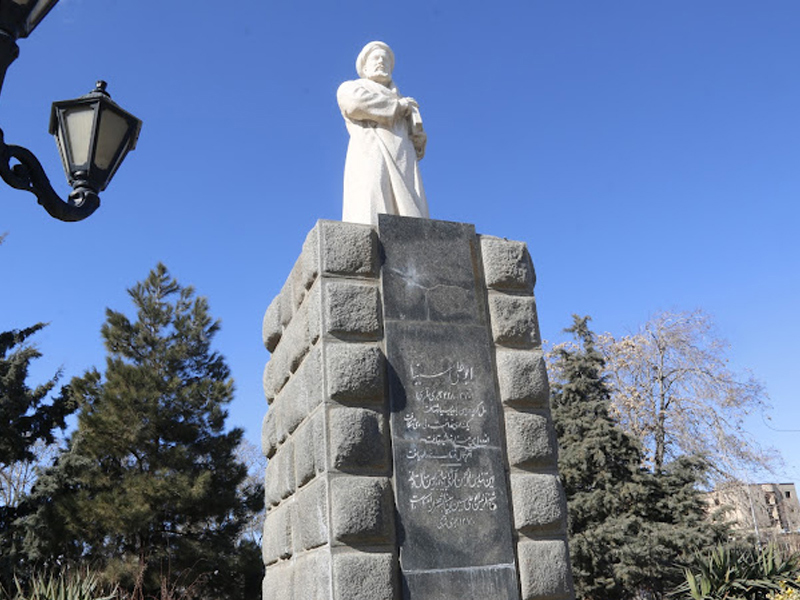
In other words, with the effort and dedication of a Qajar princess, the burial place of Avicenna was built, preserving his memory and legacy for eternity. Continuing the story of the restoration of this historical artifact, in the year 1299 AH, Mohammad Hossein Fereid al-Dowleh Golgoun Hamadani built walls around the vicinity of the mausoleum and conducted extensive renovations. Finally, a small hall was built next to the mausoleum, which serves as a library. At that time, this library had 649 books and was transformed into a reading room within the Avicenna mausoleum.
Tomb of Avicenna during the Pahlavi Era
During the reign of Mohammad Reza Shah Pahlavi, the Iranian National Monuments Society approved the construction of a new tomb and monument for the burial place of Sheikh al-Rais (Avicenna). Based on this decision, in Khordad 1324 (June 1945), a tender was held to select the best design and plan for this mausoleum. Among the designs submitted in this tender, the design of an Iranian engineer named “Houshang Seyhoon” was accepted. His design caught the attention of the jury. The proposed design received strong approval from André Godard, who was the director of the Iranian National Archaeological Administration and the technical director of the Archaeological Museum at that time, as well as engineer Mohsen Foroughi. This idea was selected as the main design and ultimately entrusted to Engineer Houshang Seyhoon for implementation.
Stages of implementing the Avicenna Mausoleum project during the Pahlavi Era
After the final design by Engineer Seyhoon was accepted, it was decided to present a new mausoleum on the tomb of Avicenna. The new research was initiated by Engineer Seyhoon, who went to Paris to complete his studies. In Khordad 1328 (May 1949), he submitted the executive and final plan of this mausoleum as his thesis to the Faculty of Fine Arts in Paris. In the same year, in Tir (July 1949), a copy of this final design was sent to the Iranian National Monuments Society.
After the final design was completed, a contract was signed between the construction company of Engineer Ehtejaj and partners, named “Nesbi Company,” and the work began.
In the first step, the old mausoleum was demolished. Therefore, after the corner of the grave was performed and the remaining bones and skull were placed in special boxes in the presence of a group of dignitaries and solemnized, the mausoleum was completely demolished. In 1330 (1951), it was fully prepared, and the builders delivered the completed mausoleum to the Iranian National Monuments Society in Bahman (January/February 1952). On the 11th of Ordibehesht (April/May), 1331, the box containing the bones of Avicenna and his skull, along with the bones of Abu Sa’id Dakhduk, was transferred to their mausoleum and placed in the new tomb.
Architecture of the Mausoleum
You may not know that the architecture of the Avicenna Mausoleum is considered one of the most important historical works of all ages. It was designed and executed with inspiration from the Gonbad-e Qabus, which was one of the historical and significant works of Sheikh al-Rais’s era. It should be noted that the architectural style of this structure and the Gonbad-e Qabus have significant differences. However, it can be said that the idea of designing this memorial building was a completely free and modern interpretation of the Gonbad-e Qabus. This mausoleum has 12 columns, representing the 12 sciences and knowledge that Sheikh al-Rais mastered. All the columns are made of granite and are located at the top of the tomb. It’s worth mentioning that this beautiful memorial structure was registered as a national monument of Iran on the 21st of Ordibehesht (May) 1997. Taking into account considerations such as limited space and cost-saving in construction, it was made with dimensions significantly smaller and more compact compared to the dimensions of Gonbad-e Qabus.
In the construction of the Gonbad-e Qabus (Qabus Dome), each of the 12 columns is spaced apart from each other, allowing easy passage between them. However, in the structure of the dome, the 10 columns are completely connected, and apart from the entrance door, no other gap is provided for passage between the columns. One of the main reasons for creating space between the columns was to accommodate heavy winds that occur in Hamedan during the autumn and winter seasons. The spacing between the columns helps the winds to pass through the mausoleum easily and prevents damage to the structure. The mausoleum of this renowned scientist was built on a land area of 3090 square meters, with the main foundation covering 1792 square meters. The design of the surrounding gardens of this mausoleum was also inspired by Iranian gardens, and the presence of a water fountain in the area represents the water basins found in traditional Iranian houses.
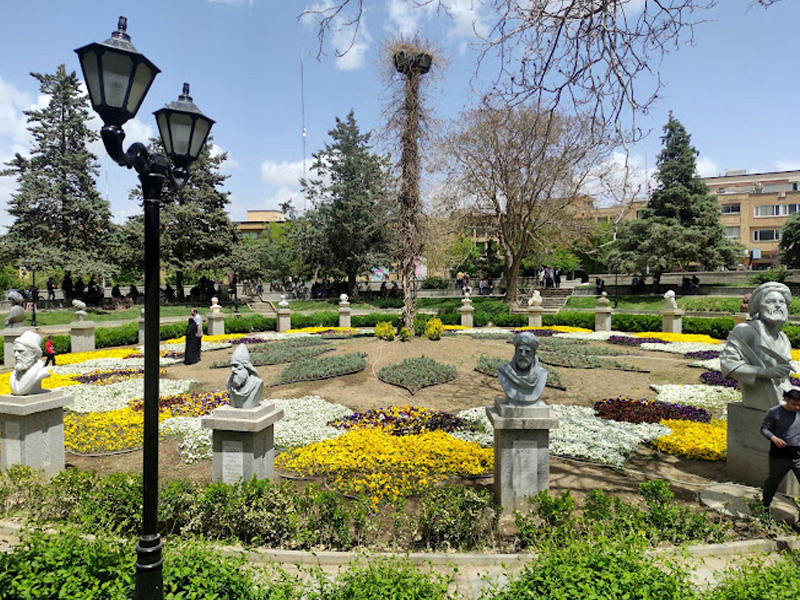
Various Sections of the Avicenna Mausoleum:
As mentioned in previous sections, the Avicenna Mausoleum consists of various parts, each having its significance. The complex includes the mausoleum, the statue, the library, and the museum. The construction of the mausoleum was done in a way that preserves the authenticity of Iranian architecture while symbolizing our country and the passage of history through different eras. In this section, we will explore the different parts of this mausoleum.
1. Green Area of the Avicenna Mausoleum:
The first section you encounter upon entering is the courtyard of the mausoleum. The courtyard is designed in the shape of a semicircle and consists of a garden, a water fountain, and green spaces. The design of the garden and the courtyard of this area was inspired by Iranian gardening, and by designing a basin, which is a symbol of ancient Iranian houses, they completed the landscaping. The statue of Avicenna is also placed on the eastern side of the square, and in the eastern courtyard of the mausoleum, you can also see the beautiful mausoleum of Aref Qazvini.
2. Stone Statue of Avicenna:
The statue is made of Sheikh al-Ra’is (Avicenna) and represents his true face. It is interesting to note that all the images seen in old versions of libraries are based on European editions, which are of course lacking in authenticity, and the artists designed these faces based on guesswork. Therefore, the National Heritage Society decided to design and execute a statue of Sheikh al-Ra’is based on the information found in the book “Sawan al-Hikmah” by Bihzad and some other works of Avicenna collected by one of his students named “Ubayd”. Finally, a design and presentation of his image was made by Abolhasan Sadeghi, who executed the statue. In 1328 SH, the National Heritage Society requested Mr. Sadeghi to create a standing statue of Avicenna. This statue weighs 4.5 tons and is made of white marble, with a width of 90 centimeters and a height of 3 meters and 10 centimeters. Currently, you can see this statue on a rectangular pedestal on the eastern side of Avicenna Square in Hamedan.
3. Tomb of the Mausoleums:
It is worth knowing that the tomb of Sheikh al-Ra’is is located exactly on the right side of the entrance to the mausoleum. The tomb of Abu Sa’id Dakhduk can also be seen on the left side. In the eastern courtyard of the mausoleum, right in front of Bu Ali Street in Hamadan, you can also see the tomb of Abu Al-Qasim Aref Qazvini, who was one of the poets of Iran.
4. Avicenna Museum:
In 1951, a museum was established in the southern hall of the mausoleum to house ancient objects such as bronze artifacts, coins, ceramics, and other items discovered in Hamadan from pre-Christian eras. One of the most significant artifacts you can see in this museum is a picture of Avicenna’s skull, which was obtained during the demolition of his old tomb.
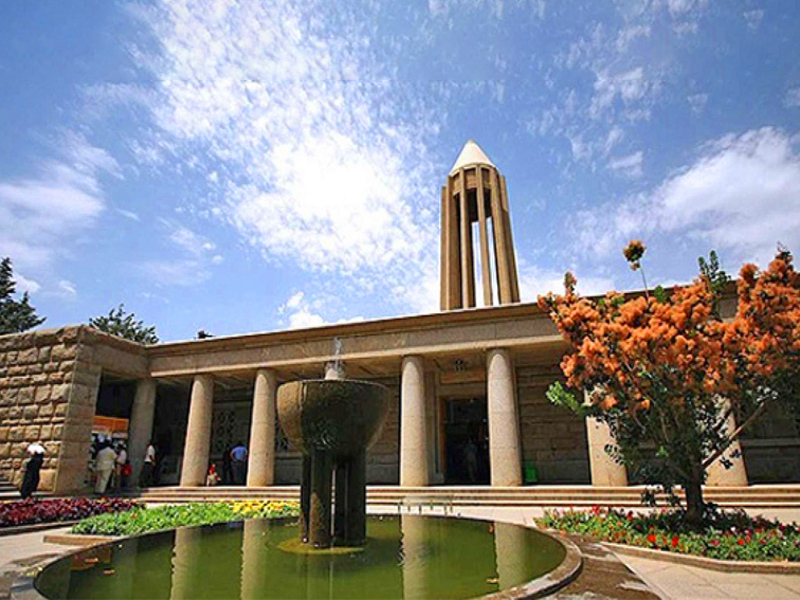
5. Comprehensive Library of the Avicenna Mausoleum:
The last section is the northern hall of the mausoleum, where a library was constructed. Initially, the library housed only 649 books, which were also referred to as the mausoleum’s reading room. In 1950, an announcement was published in French, Arabic, Persian, and English, requesting all domestic and foreign collections, cultural institutions, and authors to send their works to the National Heritage Society.
As a result of this wise decision, the number of books placed in this library reached 8,000 volumes, and currently, alongside handwritten and ancient manuscripts, you can find books in various fields such as literature, science, and history in this library.
Ibn Sina and the Untold Facts:
A few interesting points to mention about Ibn Sina are that he was a skilled and renowned physician worldwide, and his book “The Canon of Medicine” is attributed to him and is taught in some medical universities. For this reason, numerous prizes and works are registered in his name. It is worth noting that in a hidden section of the mausoleum, there is a mouth-shaped cavity called “Ibn Sina’s Mouth” in his honor. Additionally, the Ibn Sina Prize, which is awarded by UNESCO, is considered one of the most prestigious awards given every two years to individuals who have made significant contributions to ethics, philosophy, and pioneering science.
A final interesting note is that in 2009, Iran presented a gift to the United Nations as a symbol of peaceful scientific progress, which was placed on the right side of the main entrance of the organization in Vienna. This symbol was a four-sided structure featuring sculptures of four great Iranian philosophers: Abu Rayhan Biruni, Avicenna, Zakariya Razi, and Omar Khayyam.
related post
Exploring the Majestic Ali Sadr Cave in Iran!
Anahita Temple, Kermanshah Province
Tourist Attractions around the Tomb of Avicenna
After visiting the tomb of Sheikh al-Ra’is, you can easily explore the surrounding attractions. These sights include:
- Baba Taher Tomb, which is only 3 kilometers away from the tomb of Sheikh al-Ra’is.
- Raphael Church, located at a distance of 151 meters from the tomb of Sheikh al-Ra’is.
- Mausoleum of Great Figures and Celebrities of Hamadan, situated 3 kilometers away from the tomb of Avicenna.
- Hegmataneh Museum, located 3 kilometers from the tomb of Sheikh al-Ra’is.
- Ganjnameh Complex, which is 9 kilometers away from the tomb of Avicenna.
All of these are among the other historical and tourist attractions of Hamadan, located within a short distance from this mausoleum.
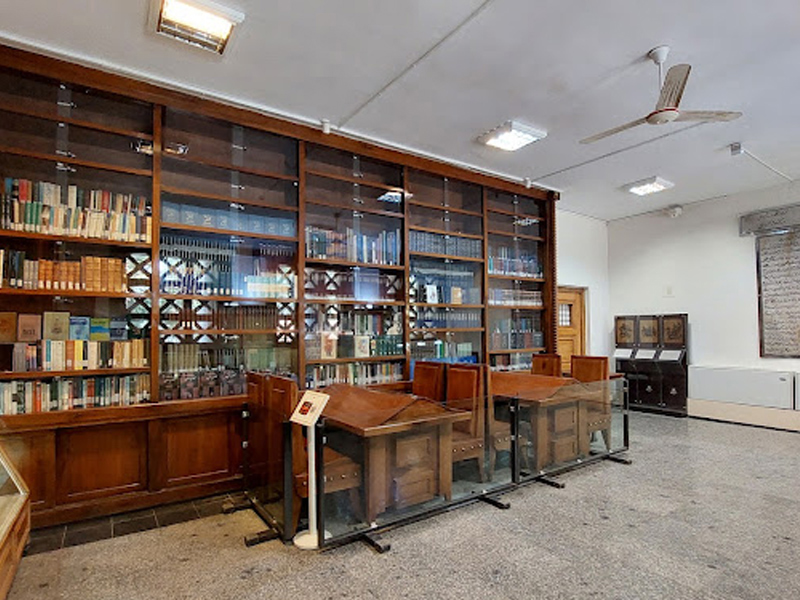
Avicenna and His Magnificent Mausoleum
Avicenna mausoleum is one of the attractions in the city of Hamadan that has been visited by many domestic and international tourists. This mausoleum was built in honor of the great philosopher Avicenna, who made enduring contributions in various fields such as ethics, philosophy, and medicine. It stands as a memorial to his selfless efforts. This distinguished structure is one of the proud symbols of Hamadan and was constructed at the very location where Avicenna himself chose to reside.
FAQ
-
Who was Avicenna, and why is his mausoleum significant?
Avicenna, also known as Ibn Sina, was a renowned Persian polymath and philosopher who made significant contributions to medicine, philosophy, and other fields. His mausoleum is significant because it serves as a tribute to his intellectual legacy and attracts visitors interested in his life and works.
-
Where is the Avicenna Mausoleum located?
The Avicenna Mausoleum is located in Hamadan, Iran. It is situated in the Bu Ali Sina Park, which is named after Avicenna himself.
-
What can visitors expect to see at the Avicenna Mausoleum?
The mausoleum complex consists of a beautiful tomb structure, a museum dedicated to Avicenna’s life and works, and a library. Visitors can explore exhibits showcasing Avicenna’s manuscripts, medical instruments, and artifacts related to his era.
-
Can visitors access Avicenna’s writings at the mausoleum?
While the Avicenna Mausoleum houses a library, it does not provide direct access to Avicenna’s original writings. However, visitors can explore books and resources related to Avicenna’s works and philosophy within the library’s collection.
